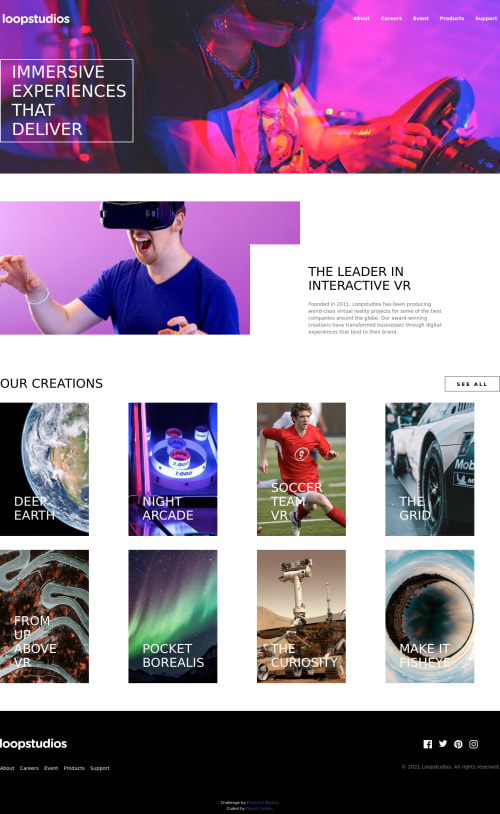Responsive loopstudios landing page tailwind-css

Please log in to post a comment
Log in with GitHubCommunity feedback
- @adex-hub
It looks cool but add transitions to the parent elements of the hover state as this would help the hover state to feel a lot smoother.
For your html validation, delete the srcset attribute on the image tag and fill in the alt attribute on the image tag as well as this would help the user understand what is meant to be in the image's position on the webpage in case the image doesn't load due to bad/slow network or other issues.
Join our Discord community
Join thousands of Frontend Mentor community members taking the challenges, sharing resources, helping each other, and chatting about all things front-end!
Join our Discord